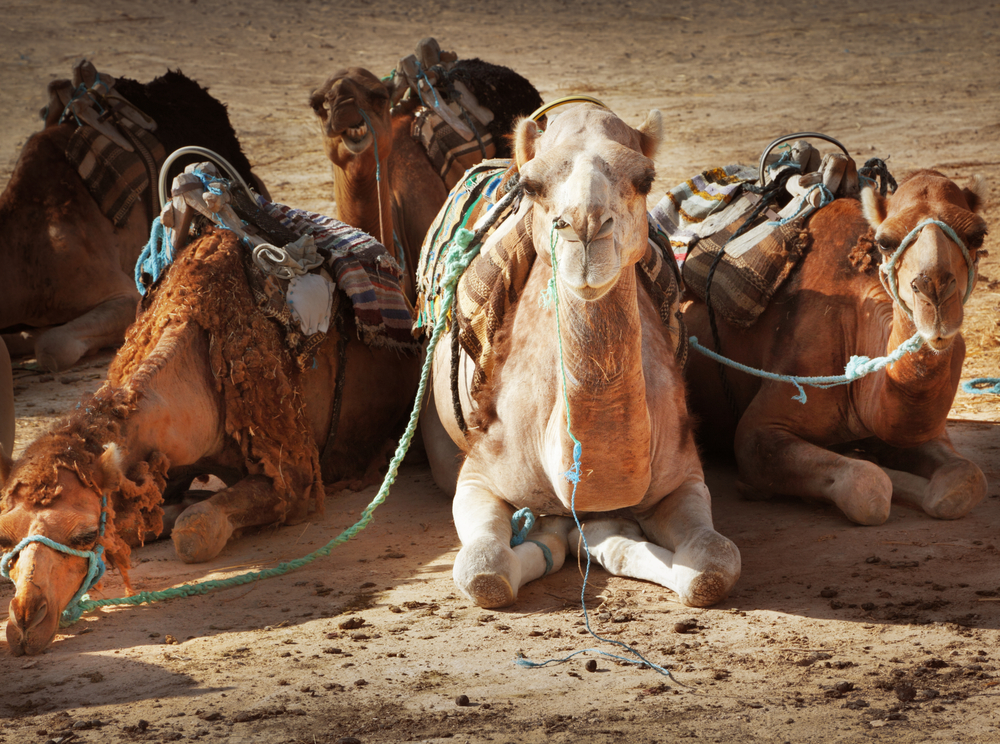
Camels are ultra efficient workhorses, and the secret to their success may be in their blood.
While most people think of horses, cattle and oxen as the ultimate pack-animals, camels have been equally useful to humans. The perfect longhaul transport vehicle—able to travel for weeks without water or food thanks to reserves in its hump—camels also provide us with wool, milk, and meat.
Ursula Windberger, a veterinarian and senior biomedical researcher with the University of Vienna, calls camels the animal of the future. Recently, she helped conduct a study looking at how camels handle exercise, in specific, how their blood composition changes, sampling 11 dromedary camels after a 30 minute jog. Though preliminary, their findings suggest the endurance trekkers’ blood dynamics may be the total reverse of many mammals, making them one the most efficient animals on earth.
For the majority of mammals, working out causes the proportion of red blood cells (RBCs) in our blood, carrying oxygen to our tissues and muscles, to increase. But eventually this process reaches a tipping point, called the optimal hematocrit level, a ratio past which point the addition of RBCs actually lowers oxygen delivery rates. Blood becomes so thick the cells can’t reach their targets.
Windberger explains that in animals like horses, as the speed of blood also increases during exercise, to pump oxygen throughout the body at a quicker pace, this threshold increases. When blood is moving more slowly, such as in veins, this threshold decreases.
‘The camels we tested showed the exact opposite pattern, raising their threshold very little in response to the run we submitted them to,’ says Windberger.
This would be useful when the animal becomes dehydrated and blood becomes thicker, she says. ‘This also means camels may be able to do work more economically, as recruiting more red blood cells to the blood requires more energy.’
 Other camel blood oddities have been noted. For starters, their RBCs don’t aggregate. They’re also inflexible and lack the central depression characteristic of most mammalian RBCs. But Windberger says it’s far too early to chalk-up camel’s unique hematocrit threshold pattern to any of these deviations, or speculate about other reasons.
Other camel blood oddities have been noted. For starters, their RBCs don’t aggregate. They’re also inflexible and lack the central depression characteristic of most mammalian RBCs. But Windberger says it’s far too early to chalk-up camel’s unique hematocrit threshold pattern to any of these deviations, or speculate about other reasons.
She says their results will have to be confirmed removing a few factors, like elevation, as the study was done 1,700m above sea level in a region of South Africa. They’ll also be looking to standardise the exercise protocol in their next project, and ramp up the workload, probably by using treadmills. Despite these possible sources of error, Windberger says after the study she’s even more sure about camels as a solution for the future, amongst lessening resources and climatic shifts.
‘If camels use less water, less energy, and have a wider variety of purposes than horses or cattle, they could help people adjusting to the type of harsh environments becoming more common all over the world,’ says Windberger. ‘It’s time we saw camels eye to eye, and change our sense of their worth.’
